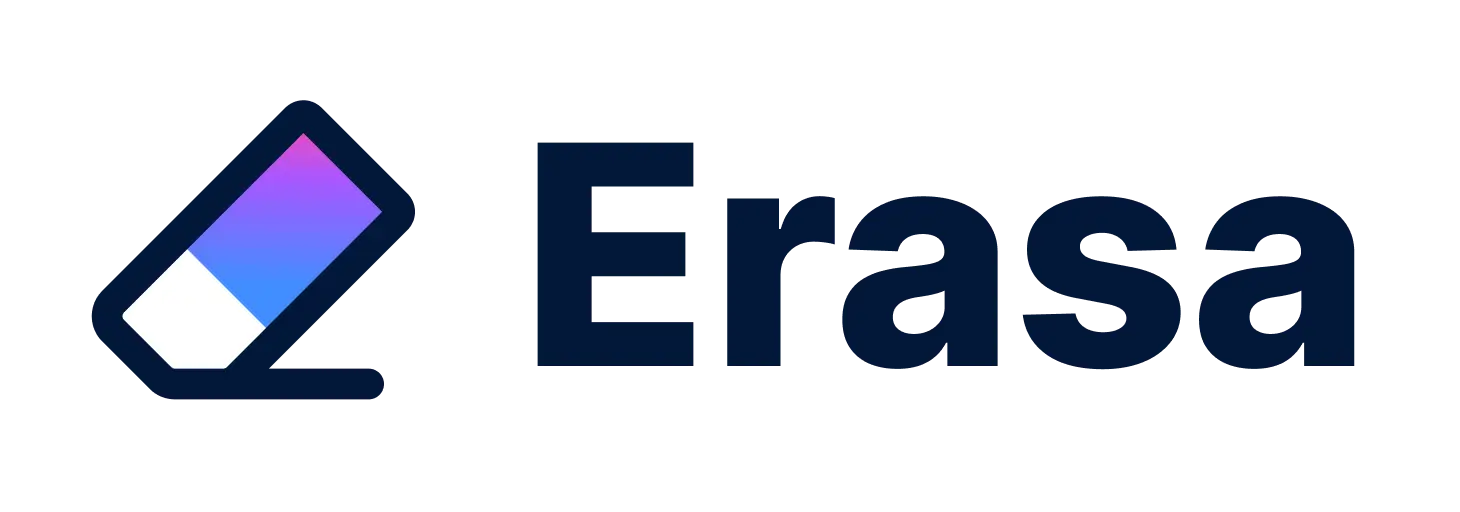Come individuare Online le immagini generate dagli aiuti, contraffatte o rubate
- Introduction: Why This Matters Now
- Step 1 — Identify AI-Generated Images with Detection Tools
- Passo 2 - controlla se l’immagine viene riutilizzata, rubata o fatta trapelare
- Step 3 — Take Action If Your Image Has Been Misused
- Step 4 — Prevent Future Misuse of Your Photos
- Step 5 — Understand the Difference: AI Detection vs. Image Tracking
- Final Thoughts — AI Detection Is Only the Beginning
- FAQ
- Read More
Introduction: Why This Matters Now
AI-generated images have become nearly indistinguishable from real photos.
From realistic portraits made by Midjourney to deepfake videos spreading across social media, it’s harder than ever to tell what’s authentic.
Ma scoprire una foto AI-made è solo Metà della battaglia .
Even genuine images can be Reimpiegati, rubati o impersonati Attraverso il web, spesso senza la vostra conoscenza.
In this guide, we’ll explore both sides:
- How to identify AI-generated images using reliable tools.
- How to find out if your real photos are being reused or leaked elsewhere — and what you can do about it.
Step 1 — Identify AI-Generated Images with Detection Tools
AI-detection tools are the first step when you’re unsure whether a picture is synthetic or human-made. These platforms analyze visual artifacts, pixel inconsistencies, or metadata patterns that often appear in AI-generated images.
Here are some trusted options:
- Hive Moderation – A reliable platform used by developers to detect AI-generated and explicit content. It provides a confidence score indicating whether an image was likely AI-made.
- Sensity AI – Specializes in identifying deepfakes and synthetic media using forensic analysis and image fingerprinting.
- Illuminarty – A browser-based AI detector that highlights manipulated areas or signs of diffusion-generated content.
These tools are helpful for confirming whether an image is AI-generated —
but Non riescono a dirvi dove altre immagini esistano online.
And that’s the real problem: whether the content is AI-made or not, it may still be Riutilizzati o impersonati Attraverso più account e siti web.
Passo 2 - controlla se l’immagine viene riutilizzata, rubata o fatta trapelare
Anche se l’immagine è autentica, potrebbe circolare online senza il vostro consenso.
Il riutilizzo dei contenuti - dalle impersonazioni di profilo alle sole perdite dei fan - è ora una delle forme più comuni di abuso digitale.
Usa strumenti di ricerca a ritroso immagine
La ricerca inversa aiuta a scoprire Dove altro appare una foto Su internet.
Caricando un’immagine o inserendo un URL, questi strumenti scansionano database visivi per ottenere immagini simili o identiche.
Le opzioni popolari includono:
- Google Reverse Image Search - lo strumento più semplice, buono per pagine web generali e frammenti di social media.
- TinEye - noto per seguire le versioni modificate o ridimensionate di un’immagine.
- Erasa - una piattaforma specializzata creata per creatori, modelli e marchi al fine di individuare i repost non autorizzati, le fughe e i conti dell’impersonazione in tutto il web.
Erasa non rileva se un’immagine è stata generata ai-invece, ti aiuta a scoprire dove il tuo vero contenuto viene riutilizzato, fatto trapelare o copiato. Con una sola scansione è possibile identificare account simili, nomi utente rubati e specchi di contenuti su piattaforme sociali e per adulti.
Questo rende Erasa particolarmente prezioso peri creatori che hanno sperimentato:
- Account falsi o clonati sui social media
- Solo fan o Patreon contenuti reimpostati senza permesso
- Il loro nome o la loro faccia sono stati riutilizzati nei falsi prodotti dall’ai-.
If you’ve ever searched your own photo online and found it somewhere unexpected, Erasa is designed for exactly that scenario.
👉 Prova Erasa per vedere dove appaiono le tue foto online.
Step 3 — Take Action If Your Image Has Been Misused
Una volta che si identifica un’immagine riutilizzata o rubata, il passo successivo è Prendere provvedimenti.
Here’s how you can respond effectively:
- Collect evidence. Take screenshots of URLs, profiles, and timestamps showing where the content was reposted.
- File a DMCA takedown. Many sites — from Reddit to adult forums — comply with DMCA requests. Erasa provides automated DMCA templates and handles takedown submissions directly for its users.
- Report impersonation accounts. Platforms like Instagram and X (Twitter) allow you to report fake accounts that use your photos or identity. Include reference links to your official profiles for verification.
- Monitor re-uploads. After removal, it’s crucial to continue scanning the web. Erasa’s Brand Monitor and Leak Detector automatically alert you when your content reappears on new sites.
In 2025, removing a single leak isn’t enough — protecting your online identity means building an ongoing monitoring routine.
Step 4 — Prevent Future Misuse of Your Photos
The best protection is proactive prevention.
Here are practical steps to minimize future image misuse:
- Add subtle watermarks to identify original ownership.
- Avoid posting full-resolution images publicly when unnecessary.
- Use Erasa’s monitoring dashboard to detect new leaks or cloned profiles early.
- Register your copyrights or trademarks for added legal strength.
- Track metadata exposure. Tools like ExifCleaner or Erasa’s metadata checker can help you manage what’s shared when you upload files.
By making small adjustments now, you reduce the risk of both AI-generated misuse and unauthorized reposts later.
Step 5 — Understand the Difference: AI Detection vs. Image Tracking
These two concepts often get mixed up — but they serve different purposes:
| Feature | AI Detection | Reverse Image Tracking (Erasa) |
|---|---|---|
| Purpose | Identify if a picture was AI-generated | Find where an image appears online |
| Method | Pixel analysis, neural network forensics | Cross-platform visual and metadata matching |
| Use Case | Spot deepfakes or synthetic media | Discover leaks, impersonations, or content theft |
| Best Tools | Hive Moderation, Sensity AI, Illuminarty | Erasa Reverse Image Search, Google Lens |
Both are essential in the modern internet landscape:
AI detection tells you what’s fake,
while Erasa tells you where the real image is being misused.
Final Thoughts — AI Detection Is Only the Beginning
AI-generated media is reshaping how we view authenticity online.
But for creators, brands, and everyday users, the bigger issue isn’t just “Is this AI?” —
it’s “Who’s using my real photos, and where?”
AI detection tools are useful for spotting manipulated content.
Erasa steps in Dopo quel punto - per rintracciare le immagini riutilizzate o rubate, controllare le impersonazioni e contribuire a rimuovere dal web i contenuti non autorizzati.
Together, these approaches form a complete digital defense:
Detect the fake. Trace the real. Protect what’s yours.
FAQ
1. How can I tell if an image was AI-generated?
Use detection tools like Hive Moderation or Sensity AI. Look for common artifacts such as asymmetrical patterns or inconsistent lighting.
2. What if my real photo appears on another website?
Run a reverse image search on Erasa or TinEye to locate where it’s been posted. You can then issue a takedown request.
3. Can AI-generated photos be copyrighted?
In most countries, AI-generated images lack human authorship, so they generally cannot be copyrighted.
4. How do I remove AI-generated fakes or leaked photos?
Use Erasa’s takedown system or file a DMCA request directly with the hosting site.
5. What’s the best long-term way to protect my content?
Combine detection tools, reverse image tracking, and proactive content monitoring with Erasa to build a full protection loop.
Read More
1.Where to Find OnlyFans Leak Detection Services (2025)
2.Erasa Upgrade – Find Leaked Content & DMCA Takedowns
3.Best Pornstar Identifier Tools to Find Adult Stars by Photo
Le persone hanno anche apprezzato
È possibile invertire la ricerca di immagini su un volto nel 2025? Guida completa
Imparate se è possibile invertire la ricerca di un’immagine su un volto e capire come funzionano strumenti come Erasa nel 2025. Capite perché Google non può fare ricerche facciali e cosa funziona davvero.
Perché sei ombreggiato su Twitter (X) - ragioni reali
Imparate perché il vostro Twitter (X) reach è improvvisamente caduto. Questa guida spiega le vere ragioni dietro shadow e come confermare lo stato di visibilità in minuti.
Best foot Pics Platforms 2025: Safe, Private & Scam-Free
Confronta le migliori piattaforme pics per i piedi per il 2025. Impara a vendere in sicurezza, resta anonimo, evita le truffe e protegge i tuoi contenuti con Erasa.
Come individuare Online le immagini generate dagli aiuti, contraffatte o rubate
Imparate a scoprire le immagini generate da ai-ko, false o rubate online - e come Erasa aiuti a rintracciare le perdite, l’impersonazione e l’uso improprio dei contenuti.
Servizi di rilevazione di fughe (2025)
Scoprite i migliori servizi di rilevamento e di rimozione delle perdite solo tra i fan nel 2025. Confronta Erasa, Rulta, DMCAForce e altro per proteggere velocemente il contenuto e il reddito.
Chi può aiutare a rimuovere i contenuti trapelati che continuano a tornare indietro?
"Scopri chi può aiutare a rimuovere i contenuti trapelati che continuano a ritornare. Confronta strumenti fidati come Erasa per fermare i ricarica e proteggere la tua privacy."
Modalità di invio di un decolli DMCA (guida 2025 + modello gratuito)
Imparate come inviare un decodificatore DMCA nel 2025 con una guida passo per passo, modelli di email e suggerimenti. Rimuovere velocemente i contenuti rubati con lo strumento DMCA di Erasa.
Strumenti per il monitoraggio dei marchi nel 2025: benefici, caratteristiche e perché contano
Scoprite come gli strumenti di monitoraggio dei marchi proteggeranno le imprese nel 2025. Imparate benefici, funzionalità, e perché Erasa spicca per il monitoraggio assistito e il decollo immediato.
DMCA Takedown Request: Bulk Content remove Guide
Impara a registrare le richieste di decolli DMCA, a rilevare i contenuti rubati ea rimuovere gli account falsi con strumenti di monitoraggio e rimozione automatica.
Cosa succede se qualcuno perde le tue foto Private? Rimuoverli velocemente
Preoccupato di cosa succede se qualcuno perde le tue foto private? Imparate a segnalare, rimuovere e proteggere i contenuti trapelati con misure legali, tecniche e preventive.
Idee di immagini da 25 piedi e più: pose Creative e suggerimenti di Instagram
Scoprite più di 25 piedi creativi immagini con suggerimenti, strategie di crescita Instagram, guida tariffaria e modi per proteggere i vostri contenuti dal furto. Perfetto per fotografi, influenzatori e creatori.
Pornstar Identifier: Proteggi i Tuoi Contenuti in 2025
Scopri come i creator adulti usano strumenti Pornstar Identifier per trovare profili falsi, rilevare leak e proteggere il proprio reddito con Erasa.






